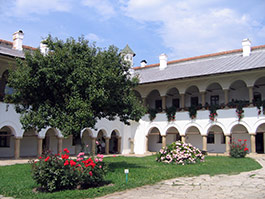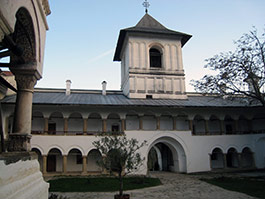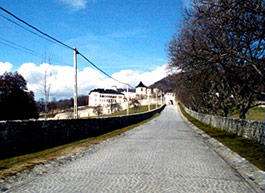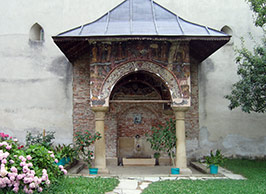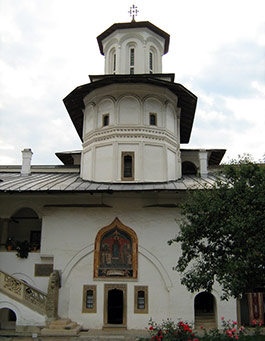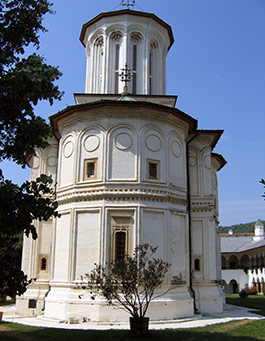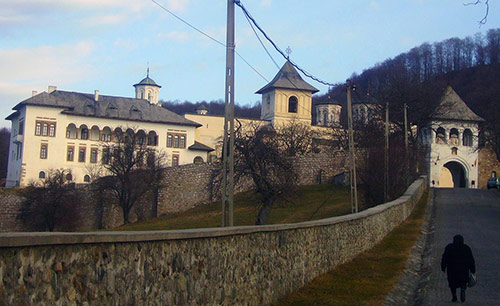Horezu Monastery
Located in Valcea County,  at the foot of Capatanii Mountains, Horezu Monastery is considered to be the most representative construction in the Brâncovenesc style.
at the foot of Capatanii Mountains, Horezu Monastery is considered to be the most representative construction in the Brâncovenesc style.
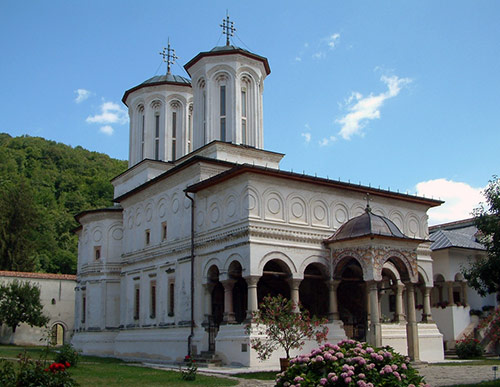
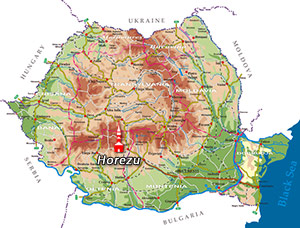
The place of worship, with Saints Constantine and Helena as its dedication day, was built between 1693 and 1697, during Constantin Brancoveanu’s reign. Since 1993 it has been included in the UNESCO patrimony.

The entire monastic complex covers more than 3 hectare, and includes the monastery, the Bolnitei church, founded by lady Mary (Constantin Brancoveanu’s wife), built in 1696 and painted by Preda Nicolae and Ianache, then the Holy Apostles’ Hermitage, located 50 meters to the North, founded by the great archimandrite Ioan in 1698 and painted by Iosif and Ioan in 1700, and also the Saint Stephan Hermitage, named after the ruler’s oldest son, built in 1703 and painted by Ianache, Istrate and Harinte.
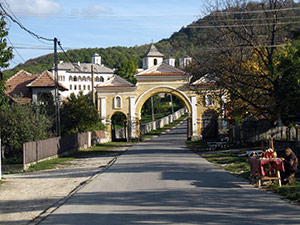
The name of the monastery comes from “huhurezi” (eagle owls), a species of night birds with coloured plumage. According to the legend, the workers hired to build it, out of the Turks fear, were forced to work only by night, when the eagle owls were singing.
The monastic complex is formed of two precinctses. The first precincts is delimited by brick walls. The second precincts has buildings on three of its sides, and a wall at East. The entrance in the main precincts has a wide vault, with a massive, wooden gate. In the belfry tower there are four bells, weighing between 300 and 1000 kilos. The name of ruler Brancoveanu is written on three of them.
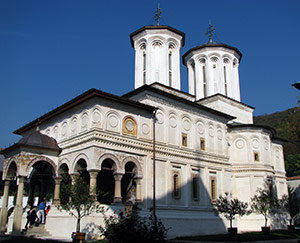
The church of the monastery is 32 meters long and 14 meters high, and can be considered an approximate replica of the Curtea de Arges Monastery.
In the pronaos there is a gallery of portraits presenting Prince Constantin Brancoveanu and his family. The interior paintings also present scenes from the Old and New Testament, moments from the dedication of the monastery and, of course, Holy Saints Constantine and his mother Helena. Towards the end of the 17th century, the Hurez Monastery sheltered a sculpture and painting school.
Constantin Brancoveanu’s family is to be found in the pronaos, because this monastery was designed as the necropolis of the Brancoveanu family. Unfortunately, the relics of the ruler, beheaded by Turks in 1714, have not been brought yet.
{tours-banner-scroll}
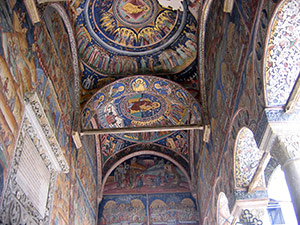
In the beginning, the monastery was for monks, but in 1872 it became a nun monastery. Over 60 000 tourists visit it every year, but the greatest pilgrimage is on Easter.
Charles Diehl, specialist in Byzantine art, considered it „Le plus beau de toute Roumanie”. In 2005, Prince Charles of Great Britain himself spent 3 days in one of the cells of the monastery.
Horezu Monastery is located on the national road DN 67, 50 kilometres West from Rm. Valcea. Those who come from RM. Valcea have to take right to Romanii de Sus village before coming down to Horezu town.
Horezu ceramic
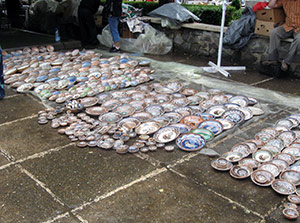
Pottery, which is a millenary traditional occupation, has been and will be a prosperous activity in some parts of Romania. Since ancient times, the farmers have adopted pottery as a complementary activity. Step by step, the most talented peasants have specialized themselves in the art of pottery and they have succeeded to impose themselves through this skill that has been handed down from generation to generation.
“Hurez ceramic” became a brand long time ago. The Horezu ceramic center has been and continues to be a true leader of the Romanian ceramic folk creation. The village of Olari from Horezu commune has always been recognized as a specialized center in ceramics. The potters from Horezu realized in the beginning regular vessels that they would sell at the fairs organized in the vicinity of their village or they would give to the waggoners who would sell them in some other villages. Usually, the trade was made outdoors (several vessels in exchange for maize, poultry or animals). The notion of “regular vessels” comes from the fact that these vessels were used in everyday usage. Later on, their usage limited only to rituals, as they were used for funeral repasts or for Saturday before Whitsuntide (mosi). The vessels were not decorated, but there were only a few enameled stains of color on them. The vessels used for consuming had to be fine and easy to use, to be resistant and hygienic as well. Besides these characteristics, the vessels had to please the eye and the soul.
Vasele decorate cu „gaita” si „cornul” – farfurii cu marimi variate, „taiere” si „ciorbalâce”, castroane de diferite dimensiuni, cani, ulcioare – reprezinta ceea ce cunoastem noi astazi ca fiind ceramica traditionala de Horezu. Le recunosti dintr-o privire dupa motivele pe care le regasesti în fiecare casa din zona si, mai ales, dupa felul îngrijit de aranjare a ornamentelor pe vas.
Contact:
Address: Str. Aleea Episcopiei, nr. 1, Ramnicu Valcea, 240178, Valcea County
Phone: +40 (250) 731170, +40 (250) 738821; Fax: +40 (250) 734952
ABBOT: Pavelina Gagea
Accommodation at Horezu Monastery::
As accommodation possibilities, the monastery offers 20 accommodation units in a mini-hotel, in rooms with one or two beds, and also in three rooms with four beds in the attic.
Phone: + 40 (250) 860071
